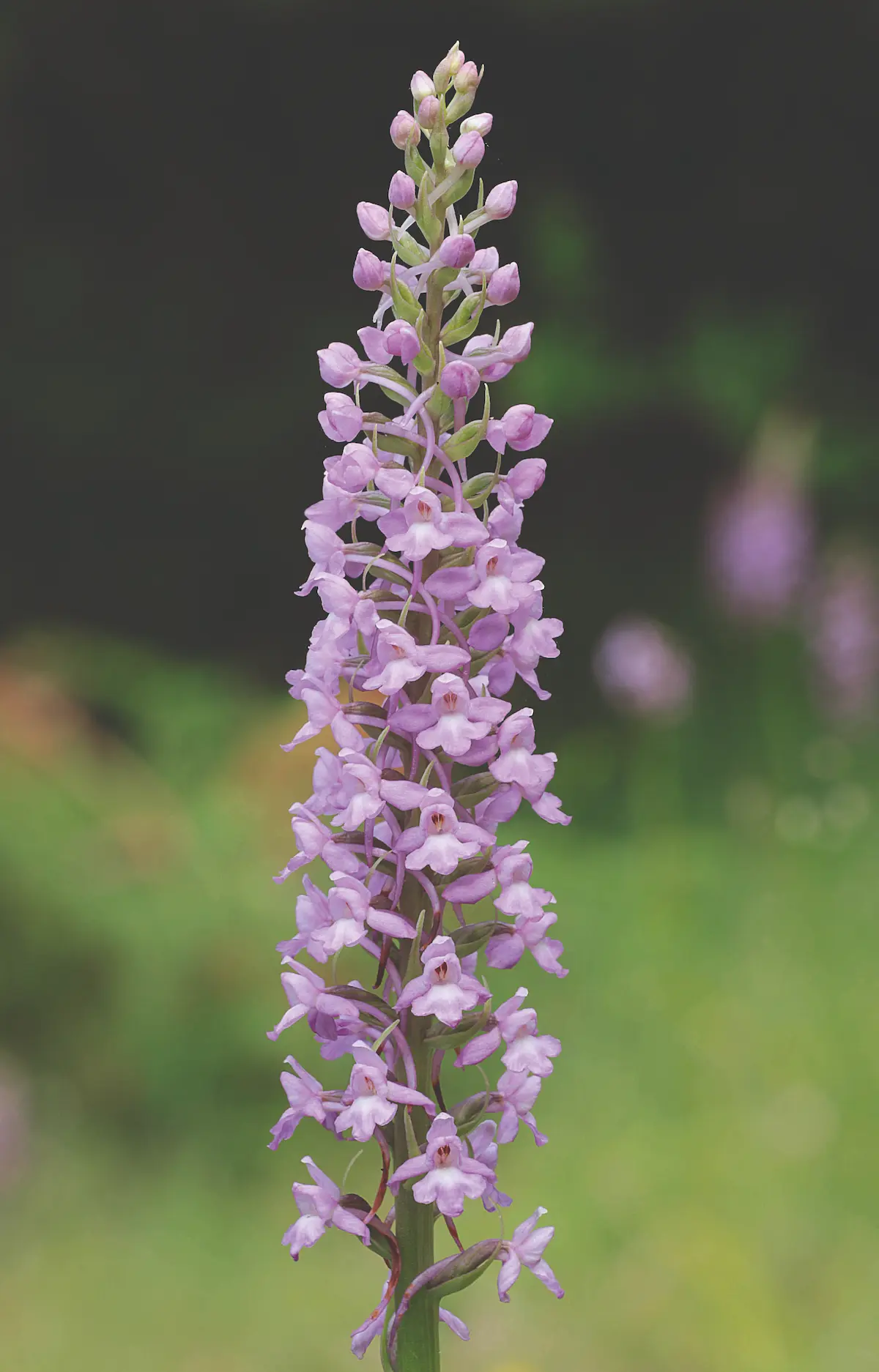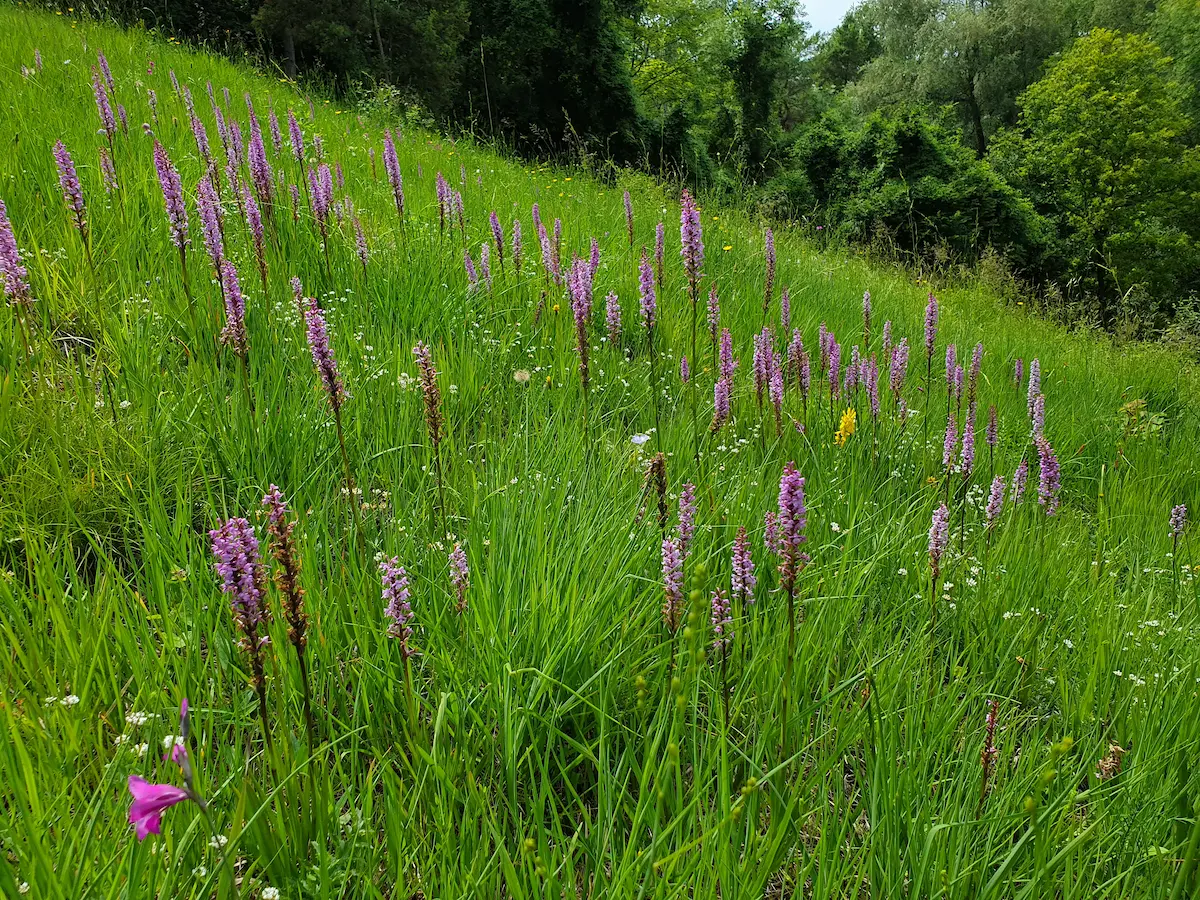The mosquito orchid (Gymnadenia conopsea) was named "Orchid of the Year 2024" by the executive committee of the Working Group of Native Orchids (AHO). The perennial herbaceous plant grows up to 80 centimetres high. The plant was given its double name because of its mosquito-like flowers and the hand-shaped divided root tubers. In addition to mosquito's hand, the plant is also known by the common names of hand flower or Christ's hand.
During the flowering period, which lasts from the beginning of June to the beginning of August, the small flowers, which are found on a flower spike up to 30 centimetres high, shine in pink to pink-purple, in rare cases pure white. With its considerable growth height, this species is one of the larger plants in the family of native orchids found in nature.
Butterflies as pollinators
The long spur of the up to 140 individual flowers on a plant is striking. For this reason, the mosquito handspur can only be pollinated by long-tongued insects, specifically by butterflies and moths. These are usually attracted by a strong, pleasant scent containing a broad spectrum of 45 volatile aromatic substances. The flowers emitted different attractant flavours in the day-night rhythm. A total of 37 species of butterflies were identified as pollinators. The fruit set is high and the fruit ripens from August. Then the capsule fruits open and disperse several thousand tiny seeds per capsule with the help of the wind.

Habitats and distribution
The orchid of the year has certain habitat requirements. It thrives particularly well on fresh to moist and nutrient-poor loam and clay soils, which can be found in wet and moorland meadows as well as in calcareous grasslands or dry and semi-dry grasslands. However, this fascinating species can also occasionally be found in sparse forests and bushes in dry and warm locations. In Germany, suitable habitats can be found south of the North German Plain as far as Bavaria. In Switzerland, isolated occurrences have been found up to an altitude of 2800 metres. In the Alps there is also an "Alpine variety", which has a lower, compact growth of 15-35 centimetres. Another is known as the "dense-flowered variety" of the mosquito orchid.
The working groups for native orchids in the federal states are committed to ensuring that the conservation and optimal care of existing habitats is also ensured in the future.
https://www.orchideen-deutschlands.de/
Text: Peter Grett
Bilder:
Aufmacher: Peter GrettMückenhändelwurz Blütenstand: Heinrich Blatt, AHO-Hessen e.V

